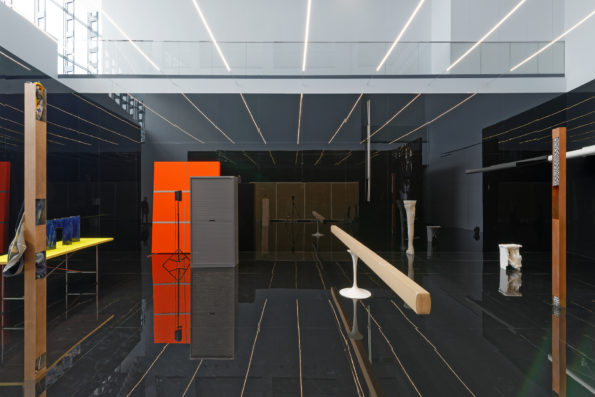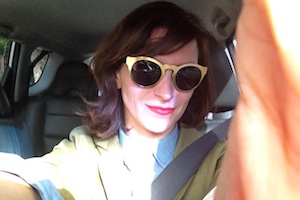Search
To search for an exact match, type the word or phrase you want in quotation marks.
A*DESK has been offering since 2002 contents about criticism and contemporary art. A*DESK has become consolidated thanks to all those who have believed in the project, all those who have followed us, debating, participating and collaborating. Many people have collaborated with A*DESK, and continue to do so. Their efforts, knowledge and belief in the project are what make it grow internationally. At A*DESK we have also generated work for over one hundred professionals in culture, from small collaborations with reviews and classes, to more prolonged and intense collaborations.
At A*DESK we believe in the need for free and universal access to culture and knowledge. We want to carry on being independent, remaining open to more ideas and opinions. If you believe in A*DESK, we need your backing to be able to continue. You can now participate in the project by supporting it. You can choose how much you want to contribute to the project.
You can decide how much you want to bring to the project.

A few weeks ago, I finished one of the conversations I had with Armando Andrade Tudela, and used the subjunctive mood to think again. I had to do it to write this text. His exhibition at CA2M in Madrid, however, is in the Spanish “infinitive tense”. To enter, to see, to observe, to reflect, to speculate… this verb form emphasizes the action, the deed or occurrence per se, without giving much importance to the subject that does it or the time it happens. It is a work constantly open which is presented before becoming the past and has multiple future possibilities.
The procedures recognised in the exhibition respond to the analysis, unravelling and reconsideration of systems and the relationships they introduce. The gestures that come with it add subtle nuances to each one of the actions, their contingencies and emanations. A collection of potentials held by Andrade Tudela from the physical and formal presence of the three areas that he organized —an atmosphere of reception and two rooms— and the pieces inside; a series of works fundamentally sculptural and sonorous.
The main areas are structures placed on top of the rooms at CA2M, two box-shaped rooms which you can enter after going through a little ritual (putting on shoe protectors) and where the walls and floor are all black, reflective surfaces. It cancels the white cube, but also any space. At the same time, it echoes the presence of each and every one of the works in the exhibition and our own image. Three actions: to create, to reproduce, to reflect.
Throughout this process, there is a certain commitment to edit from what you cannot control from the individuality. The artist has collected a series of previous pieces along with some other recently showed in the exhibition at CRAC Alsace, a sort of first chapter of “Autoeclipse” titled “On Working And Then Not Working”. Both of them propose a reflection on whether to do or not to do and the responsibility of these actions, also in infinitive.
In order to do that, Andrade stablished a working method that was carried out in different stages: to observe (the artist walks down the street in his everyday journeys), to pick (the artist notices formal meetings between objects he found during his daily travels), to capture (he turns them into a picture), to collect (a file with the pictures is created), to share (people in his studio work with this corpus), to discuss (formal and production possibilities are discussed to formalize a piece), to choose (with a shared responsibility as a studio), to experiment (with the real options behind every work, with every component, variation or difficulty), to produce (in every occasion and for every context, without closing the piece permanently), to document (turning every specific situation into a picture). Throughout this process, reflection is, in my opinion, focused on settling what the work actually is, as an action and as an object, who defines it, and trying to imagine other ways embracing chance and errors.
The next step expands on this reflection: to exhibit. The emphasis is put on the public and the institutions as managers of this sphere. The questions could be the same —what work is and who defines it— but the framework has changed. Negotiations are now with a system, and the logics and bureaucracy it establishes. The difference lies in, if the developed action can be defined in a shared endorsement at the studio, now the action is to validate from the position of one of the agents that manages the art system. An internal discussion must have occurred that we are not able to discern in the exhibition: travelling logistics, insurance, cessions, payments, agreements, sponsorships, etc. Armando Andrade has laid emphasis on them —he thinks out loud about the figure of the “rogue”, that actor who blends into and subverts the categories of a society— in this inherent lack of definition of presented works (the recombination of parts of different objects previously exhibited in France, for example) and in the working process with the curator —and I use this word consciously because of its etymology—, artist Daniel Steegmann Mangrané, in what both have described as a fertile and continuous dialogue about this body of work and its possibilities.
One of them does notice the communication plan carried out by the institution: brief information on the web, press conference, a document by the curator—and I use this name consciously too— with key points that sum up the artist’s career found on the usual texts, technicalities of the pieces and their disposition in the room, a CV and a list of other art centres, other exhibitions that led up to this moment… Do they use them to determine and justify the points of view for the validation? Perhaps, but given the genesis of the exhibition I’d rather think about how the artist questions them. Despite the use of a familiar abstraction of well-known strategies, the exhibition never ceases to make us uncomfortable and raise the question of whether it reflects (don’t forget the black surface that surrounds us) the key points we were waiting for: is this the Latin-American conceptual artist who goes through developmentalist utopias from a postcolonial perspective relating to history and art?
Out of everything we discussed and said during the meetings with Andrade Tudela, he threw down a challenge to me, or at least I thought it was. We clearly shared the same philosophical structuralist models and their revisions; I mentioned him the last text I read by Giorgio Agamben, reflecting on his work during the time of a capitalist religion. So, how do we get rid of the syntactic structure too? Of “the adoption of formulas and construction places to present your work. A way to talk, a way to give visibility in order for it to enter this system”? Thus, he refuted my arguments (wow, my reflection is reflected on the black wall of this room!). How can I put emphasis on my work as an analyst criticizing his work? Obviously, it goes beyond that: language eventually as a structure with a limited number of meanings and societal and world relationships. I went back to Foucault: examination of the definition of the world in Western Thought (from the verb it suggests), and being supported by an analysis based on similarity, on what is recognizable. In his book, “The Order of Things”, we are introduced to the possibility of thinking outside the codes of this illustrated language, of locating ourselves, like Don Quixote, he says, or like the rogue, somewhere else “no-where”: “Heterotopiasare disturbing, probably because they secretly undermine language, because they make it impossible to name this andthat, because they shatter or tangle common names, because they destroy ‘syntax’ in advance, and not only the syntax with which we construct sentences but also that less apparent syntax which causes words and things (next to and also opposite one another) to ‘hold together’”. [1]
[1] [I hadn’t included any references yet, as I was supposed to!]
Foucault, Michel. The Order of Things.Pantheon Books, New York, 1970.
(Photograph: Aurélien Mole. Courtesy of the artist)

Marta Ramos-Yzquierdo is used to change and adaptation. That is why she has has worked in the most diverse fields within the art world and the cultural management. She has lived in Paris, Granada, Madrid, Santiago de Chile, a lot of years in Sao Paulo and now in Barcelona. She talks a lot with artists and other beings to seek for many questions, especially about power structures, perception and ways of acting, feeling and living.
"A desk is a dangerous place from which to watch the world" (John Le Carré)